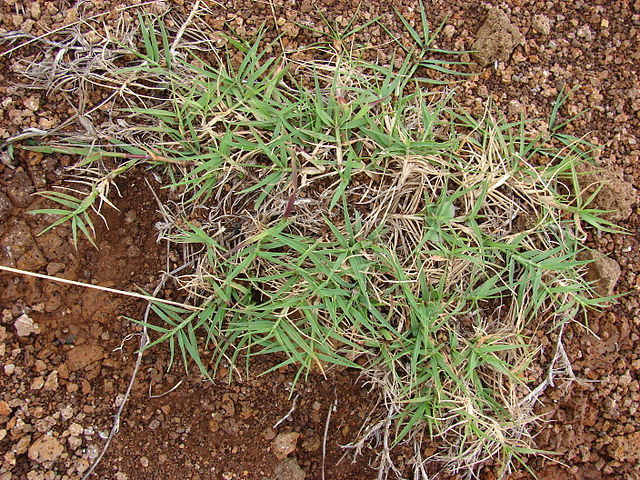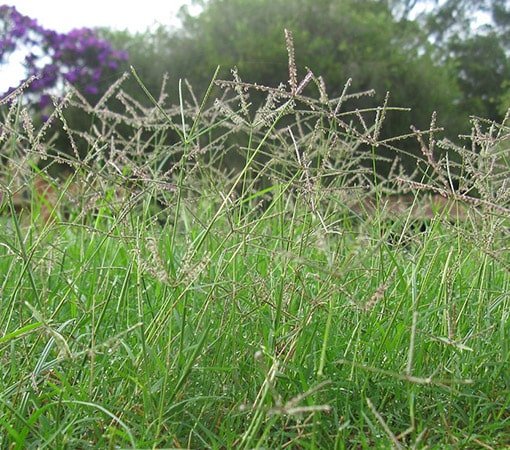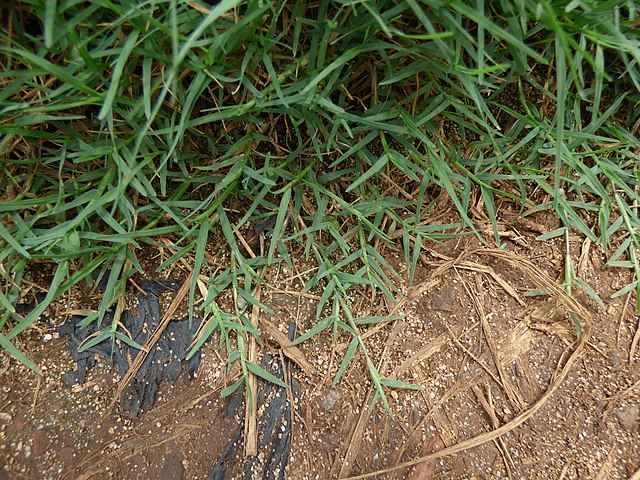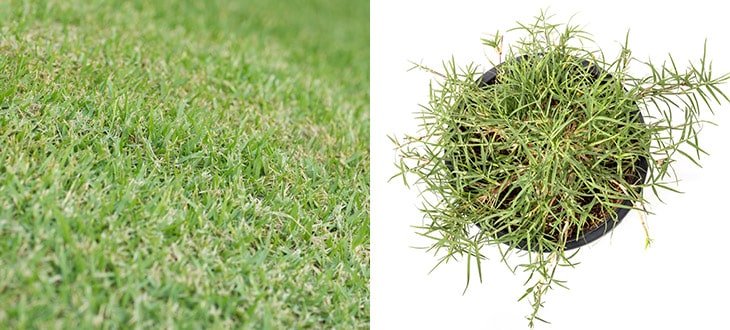Bermuda Grass: The Vine Grass Good For Lawns But Bad For Gardens
Bermuda grass is a gardener’s worst nightmare. It thrives even in sandy and clay soils, and it is a pain to get rid of it once it has installed in your lawn or garden. Yet, it has a few benefits which we are going to mention in this article.
Bermuda grass (scientific name Cynodon dactylon) is a highly invasive weed. Even though it is present in many areas of the United States, Bermudagrass is widespread in hundreds of counties throughout the tropical and subtropical regions of the globe.
Besides its most common name “Bermudagrass” or “Bermuda grass,” this weed has many other titles across the world, such as:
- Crab grass
- Devil’s grass
- Bahama grass
- Dhoob
- Dog’s tooth grass
- Durva
- Arugampul
- Wiregrass
- Scutch grass
- Couch grass
and several others.
Even though the name suggests that it originates from the Islands of Bermuda, its exact source is not fully known. However, it is known for the fact that it is more widespread in the countries from the eastern hemisphere.
Bermudagrass is one of the most crop-damaging weeds and is known to be a prominent problem in many crops like corn, sugarcane, vineyards, cotton, and more. Due to this matter, bermuda grass has been included in the list of noxious weeds in three US states Arkansas, California, and Utah.
However, it doesn’t only affect the large crops in the field. Many times, this weed invades people’s lawns and gardens. Once that happens, it is troublesome to get rid of it.
Disclosure: This page contains affiliate links. This means that the owner of this website might be compensated for any qualifying purchases made via these links.
Contents
How To Identify Bermuda Grass?
Bermudagrass has several distinctive elements that make it easily identifiable among other types of grass. Many describe bermudagrass as a “vine grass” because of its particular “tangled” way of growing.
Bermudagrass is a perennial grass that is active from late spring until fall. When the temperatures drop, it gets into a dormant state and becomes active during springtime when the temperatures rise again. In warm frost-free climates, bermudagrass stays green the whole year.
One thing that can help you identify the bermudagrass is its roots. This grass possesses a vigorous root system that can expand for over two meters deep in the soil during severe droughts.
Besides having roots that can reach an impressive size, bermudagrass has also a modified subterranean stem that develops roots and shoots from its nodes. In botanical terms, this type of root is called a “rhizome.”
The older roots deteriorate throughout the growing season, but the plant continuously produces new young roots.
Another particularity of bermuda grass that makes it even more invasive and harder to eradicate is the fact that it produces stolons (also called runners).

Stolons are stems that extend over the surface of the ground, forming new roots at the nodes and new plants from the buds. An example of a more familiar plant that multiplies by stolons is the strawberry plant.

The leaves of bermudagrass are narrow and elongated and regularly have a dark green color.
Bermudagrass also reproduces by seeds. Commonly the weed develops the seedheads at various times of the year after extended rainy periods or in stressful conditions such as drought. These seedheads have typically three to seven terminal spikes.
Bermuda Grass In Lawns
Although it is a grass considered invasive because it multiplies rather quickly and is very difficult to eradicate, bermudagrass can be an excellent turfgrass. However, that only applies when all the grass of your turf is bermudagrass, not when you have a lawn of fescue or zoysia grass and a few bermudagrass plants decide to come uninvited to the party.
Unwanted bermuda grass is one of the frequent problems of lawn owners. Once a few bermudagrass plants infiltrate through other grass varieties, it’s just a matter of time until these will multiply and overtake your turf.
People usually realize they have an intruder in their turf once they start to see different color grass color patches. If it’s not a lawn fungal problem, then it’s possible that bermudagrass has found a way to get in your turf.

Is Bermuda Grass Good For Lawns?
Bermuda grass is pretty commonly used as grass for lawns, golf courses, green recreation spaces, and other turfs. But is it a good idea of using an invasive weed as lawn grass?
Further, I will highlight a few of the benefits of choosing bermuda grass for your turf, but also the potential disadvantages.
Pros of using bermudagrass for lawns
It might be a destructive and invasive weed for gardens and field crops, but bermuda grass has quite a few attributes that make it a good grass for lawns.
Can grow in infertile soils
One of the pros of choosing bermuda grass for your lawn is the fact that this type of grass is not very nutrient-demanding. It can grow in soils where many plants and other grass varieties would not live, such as sandy and clay-reach soils. However, for a beautiful lawn, I would still recommend you applying fertilizer from time to time.
This vine weed is also very adaptable when it comes to the soil’s pH level. Consequently, it can thrive both in acidic but also in alkaline soils and has even a good tolerance to salinity.
Withstands high temperatures
If you live in a region with very hot summers, that’s not an issue for bermuda grass. This weed loves the heat and it grows best in direct sun.
The best temperature for bermudagrass during the daytime is within 95-100°F (32-38°C).
Needs less water
Do you consume too much water to water your lawn during the summer? You can reduce your expenses by opting for bermudagrass for your turf.
Unlike many grass varieties that require considerable amounts of water during hot summer days, bermuda grass is less demanding. Because of its root system that goes deep into the soil, this grass type is more drought-resistant than other popular kinds of turf grass.
Is very dense
Any lawn owner dreams at a thick grass. Bermuda grass is well-known for its density because of its particular way of multiplying with the help of stolons and rhizomes.
Good pressure tolerance
You don’t want a turf that disintegrates when you play fetch with your dog, right? That’s another advantage of this type of grass; it can recover quickly and has good traffic tolerance.
Cons of using bermudagrass for lawns
Despite of all the benefits of using bermuda grass for your turf, there are also several reasons why not to choose this grass species.
Not shade tolerant
One of the disadvantages of using bermudagrass for turfs is the fact that it is a sun-loving plant. Therefore, it might tolerate a bit of shade during the day, but it really thrives in full sun.
So, if you have many trees on your property, buildings, or other elements that make plenty of shade, you might better look for a more shade-tolerant type of grass.
Needs high temperatures
Just as it needs plenty of direct sun, bermudagrass also requires enough heat during its active period.
If you live in a country or region with a predominant colder climate, bermuda grass might not be the most appropriate choice for lawns.
Not good mixed with other turf grass
Another thing to consider when deciding to use bermudagrass for lawns is that it doesn’t look good mixed with common grass or other varieties that are commonly used as turfgrass. So, unlike you don’t want a lawn that has several shades of green and a messy look, don’t mix bermuda grass with other types.
Moreover, I’ve seen several comments of people who said that the bermudagrass would eventually choke the other types of grass because the vines are becoming very dense, leaving them no room for growth.
Difficult to contain
Because it has so many reproduction mechanisms, bermudagrass is difficult to contain once it starts multiplying. You definitely don’t want this grass near your garden.
Also, avoid sowing its seeds in the proximity of your neighbor’s fence or nearby any turf of different grass species, especially warm-season varieties. The bermudagrass won’t hesitate to extend its territory.
How To Get Rid Of Bermuda Grass
I would love to say that getting rid of bermudagrass is as simple as pulling it from the ground. Unfortunately, removing this invasive vine grass from your property is not that simple, especially the one in your warm-season grass lawn.
Pulling it is only a temporary solution. Besides the fact that it is a time-consuming task, a part of the plant’s complex root system will remain deep in the ground. Hence, you will just slow down its growth for the moment, but it will almost certainly come back the next season (or even sooner).
So, which are the options?
Over the years, I have tried numerous herbicides in my quest to eradicate the bermudagrass in my tall fescue lawn completely. Most of them just didn’t have any effect, while some of them also destroyed a part of my fescue grass.
After all the unsuccessful trials, what had the best results for me is Turflon Ester, a broadleaf weed killer for lawns.
Turflon Ester contains Triclopyr, an organic compound that is utilized as a systemic foliar herbicide and fungicide. This composite has proven to be more effective against bermudagrass than other chemicals while provoking less damage to the other turf grass species.
Studies have shown that triclopyr in combination with other herbicides such as fluazifop (Fusilade II) and fenoxaprop (Acclaim Extra) can be effective in controlling bermudagrass in lawns. A 2004-2005 experiment by Tennessee Research and Education Center records that triclopyr safens the use of fluazifop and fenoxaprop on tall fescue turf and zoysiagrass while preserving or enhancing bermudagrass control.
Besides bermudagrass, Turflon ester is also effective in controlling wild violets, ground ivy, kikuyugrass, oxalis, clover, and ragweed.
This herbicide has, however, some limitations.
The first one is that only the weeds already emerged at the time of the treatment will be affected. Hence, it cannot prevent new bermuda grass from developing. If new weeds occur, you’ll have to repeat the procedure.
Another disadvantage of Turflon Ester is the fact that it can only be utilized for cool-season turfgrass such as tall fescue, perennial bluegrass, or perennial ryegrass.
Bermudagrass is more troublesome in zoysiagrass lawns because both grass species are warm-season plants and have similar tolerance to chemicals in the herbicides. Therefore, it’s hard to only kill the bermudagrass without killing your turf grass as well.
Final Word

While many view bermudagrass as a threat for their crops and gardens, besides the people that seed it in their turf, there are also others who see it as a beneficial plant.
In Hinduism, this vine grass is known as “Durva” or “Dhoob.” It is considered a sacred plant and has important roles in religious ceremonies.
In many places, bermudagrass is seen as a blessing for the simple fact that it grows in abundance into the wild and feeds the farmers’ cattle for centuries.
Bermuda grass is also frequently used in the prevention of soil erosion. Because of its complex and deep root system, bermudagrass is the perfect candidate for this job. Plus, it grows well even in harsh conditions and is drought resistant.
In conclusion, bermudagrass might be bad for your garden or when it arrives uninvited in your lawn, but that doesn’t mean it cannot also have positive aspects.
References:



